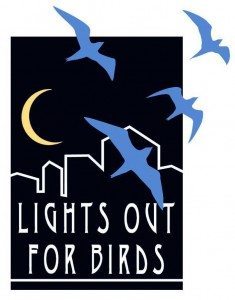Forming a national network for bird-safe buildings
By Noreen Weeden
Ten representatives from Audubon Society chapters and National Audubon staff came together in St. Paul, MN earlier this month to share ideas and strategies for protecting birds from building collisions.
I was excited to be part of this group, representing Golden Gate Bird Alliance and the Pacific Flyway. GGBA has been in the forefront on this issue, successfully pushing for Bird-Safe Building Standards in San Francisco and Oakland and mounting a Lights Out for Birds educational campaign during migration season.
Other chapters have been working on bird-building safety too. But until this summit, there had been no coordinated initiative on this across the massive Audubon network.
That changed with the Bird Safe Buildings Summit, funded by a Toyota TogetherGreen grant that let us spend three days sharing information and challenges and crafting a common vision statement.
The group included representatives from the Atlantic, Mississippi, Central, and Pacific Flyways – the migration-based divisions that National Audubon uses to focus its work. We first gathered outdoors at dinner in downtown St. Paul, a city along the Mississippi River. American Robins were singing in the park across the street and a bit later Chimney Swifts flew overhead. The next day, we lunched on an island in the Mississippi where we watched Cliff Swallows nesting under the bridge. On an evening riverboat ride, we had the opportunity to see an Osprey nesting on a platform provided by the local power company as well as several Bald Eagles that nested nearby.
This is not to imply we were sitting around birding the whole time! But it shows the challenges faced by birds in cities like St. Paul – where prime river or coastal migration routes run into walls of glass-paneled skyscrapers.



Faced with migratory bird-building collisions, Audubon Minnesota has established a bird monitoring route through the downtown area. We followed the route, which volunteers walk daily during migration season to collect birds that have been injured or killed in building collisions. This kind of monitoring provides data that can be used to educate building owners and tenants, and track the success of preventive measures.
Over the three-day period, we shared information on lights out programs, monitoring, data collection, volunteer programs, communication with building contacts, and working with municipal agencies. Then we drafted a vision statement and agreed to work as a Steering Committee that would identify additional contacts, set priorities and deadlines.

Here is the (admittedly lengthy) Bird Safe Buildings program vision statement:
We envision a world in which wild birds are abundant and thriving in our shared environment, and in which we embrace and celebrate the safe passage of migratory birds through these spaces of glass, light and human design.
We pledge to use the best science and technology available and to be truly green – as we build and design ecological communities that include people, birds and other wildlife.
Audubon is a world-renowned grassroots network of volunteers, professionals, and conservation leaders across the country who share a conservation vision for bird-friendly communities. Using our extensive resources, we identify the best place-based conservation strategies to protect and nurture wild bird populations. Our membership provides local support for regional programs. We develop, refine, and share with an established network the best tools for bird-friendly design. and we have the capacity to engage partners in underrepresented regions.
Audubon’s Bird Safe program is dedicated to a science-based, adaptive approach to building and managing the places we live and work so as to actively support healthy populations of our native birds.
Bird Safe spaces are places where — from the home to the high-rise office building, from residence to cityscape — we have reconsidered the way we use glass and light in order to provide safer passage for the migratory birds that share our communities. We envision a future where:
- Architects, lawmakers, and planners understand the threats to birds associated with glass collisions and light pollution and comprehend the vital role birds play in our ecosystems
- New development incorporates innovative and science-based techniques to reducing bird strikes
- From the neighborhood to landscape scale, communities use lighting design and management that minimizes impacts to nocturnal migrants
- Flyway-wide community participation in Bird Safe principals and actions helps support the long term stability of native migrant bird species.

Three days were just a short time. But in this short window, we were able to connect, agree on a vision, and lay the groundwork for future efforts. It’s great to know that we at Golden Gate Bird Alliance can turn to this new and growing network for help in tackling the problem of bird-building collisions.
———————————————————–
As Volunteer Coordinator for Golden Gate Bird Alliance, Noreen Weeden has taken the lead in GGBA’ work preventing building collisions. Visit our web site to learn more about Golden Gate Bird Alliance’s Lights Out for Birds program, and our work on Bird-safe Building Standards.
